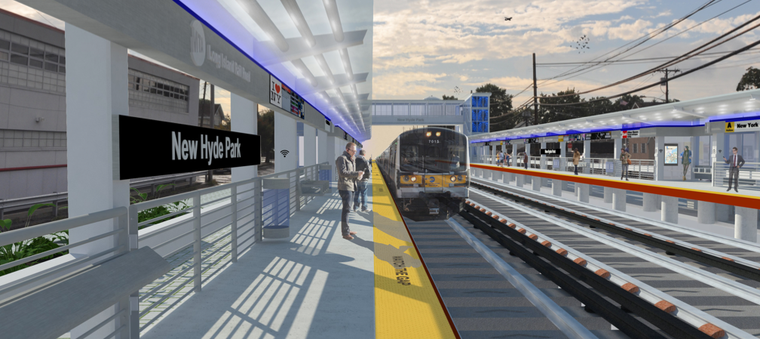The Long Island Rail Road on Tuesday named four groups of companies that it says are qualified to build a third track along 9.8 miles of its Main Line.
The groups — two of which include Long Island-based firms — will be asked to submit bids emphasizing their ability to complete Gov. Andrew Cuomo’s $2 billion project on time and engage responsibly with affected communities, the LIRR said in a news release.
The winning bidder will work with the LIRR and the state Department of Transportation through a “design-build” contracting process, which the state says ensures projects get completed on time and within their budgets.
“Several consortia of world-renowned firms have been identified as qualified to bid on this landmark project and we look forward to seeing the innovation that they propose to speed construction and reduce the impacts on the communities surrounding the project area,” LIRR President Patrick Nowakowski said in a statement.
The named consortia are 3rd Track Constructors, composed of Lawrence-based John P. Picone Inc., Dragados USA Inc., CCA Civil Inc. and Halmar International LLC; Skanska Kiewit Posillico JV, composed of Skanska USA Civil Northeast Inc., Kiewit Infrastructure Co. and Farmingdale-based Posillico Civil Inc.; Third Track Partners, composed of Granite Construction Northeast Inc., Judlau Contracting Inc. and the Lane Construction Corp.; and Tutor Perini/O&G JV, composed of Tutor Perini Corp. and O&G Industries Inc.
The LIRR sent out a request for qualifications in December. The firms were picked after a review process in which several state agencies evaluated potential bidders, including minority- and women-owned businesses, the LIRR said.
Project planners have maintained the LIRR will hold the contractors to construction deadlines to ensure the project is built in three to four years. The “design-build” process encourages innovative construction methods and imposes financial penalties for failing to follow the timeline, the LIRR said.
In their bids, the groups must include plans to minimize disruption, post regular updates and engage directly with affected residents in communities along the corridor stretching from Floral Park to Hicksville, the LIRR said.
The Metropolitan Transportation Authority will not select a group to do the work until the LIRR issues a final environmental impact statement and the MTA Board of Directors authorizes the project.
The MTA plans to add the project to its capital program, a long-term list of work that is subject to approval by the state’s Capital Program Review Board, which includes state lawmakers.
Cuomo and the LIRR have sought to distinguish this project as less intrusive than past proposals, committing to build it entirely on railroad property, take no residential property and mitigate noise and traffic issues along the corridor.
But residents and local officials have remained concerned that the project will damage their quality of life and skeptical of the LIRR’s ability to stick to its timeline and budget.
Floral Park Mayor Thomas Tweedy said the fact that such large, well-known firms will bid on the work prove “just how complicated this project is.”
Tweedy worries that the groups of companies may find the LIRR’s budget and four-year timeline are not feasible, he said.



